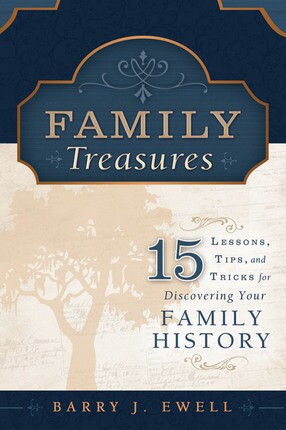Turn the hearts of your children—without twisting their arms.
Family history means getting to know the folks we plan to spend forever with. But our kids don’t always see it that way. Where we find gripping stories and a trail of love leading endlessly into the past, they see boring charts and long hours of library research. As a genealogy columnist and parent of young children, I’ve learned some fun ways to turn the hearts of my children toward their forebears—without a single cry of “Bor-ing!”
1. Tell a Story
It’s easy to add tales of family to everyday conversation. My kids are most interested in themselves, so I tell them about their own pasts. We read their baby books. I remind them about old favorite songs, playmates, and pastimes.
Children also like to hear other kids’ stories about school, friendships, siblings, or parents. Whenever an opportunity presents itself, I pipe up with a short anecdote from my childhood (or my parents’ or grandparents’ childhoods). They especially love hearing the memories behind family traditions, from blueberry picking in July to nativity readings at Christmas.
Family history is a perfect family home evening topic, too. My son once asked how he was related to a favorite cousin, so we spent FHE drawing a family tree with all the cousins on it. Another time, we read a one-page biography and had a trivia contest about an interesting ancestor. Just use whatever stories or artifacts you have handy. Share your memories or an old newspaper clipping. Use scrapbooks as jumbo-sized storybooks. Create a digital slide show of old or new family photos, narrate it, and serve popcorn.
2. Go Home
Recently I drove my family through my childhood hometown. We passed two homes I lived in and our ward meetinghouse.
On a later trip, we visited the neighborhood where my husband’s great-grandfather was a firefighter.
These places are now family landmarks. My children can visualize the exact city block or rural cul-de-sac where young relatives played. They heard the memories that sprang to my mind as we drove slowly through my old neighborhood.
I did learn a few tips about hometown stops with young children. Make the historical tour brief. If you need to make a longer stop (like to visit elderly relatives or look up genealogy information), think of ways to engage the children as much as you can. End with a kid-friendly stop at a playground or park.
Chances are good your children will remember your hometown, even if you think they’re not paying attention. Someday they may make the same pilgrimage with their children, or at least share their memories of it, and your landmarks will be handed down.
3. Be a Reporter
If your children are like mine, they ask a lot of questions. They also love to be on camera or hear their voice on tape. Turn these natural interests toward recording family stories!
First, role-play (emphasis on “play”). Have a parent sit in front of a video camera or tape recorder while the rest of you ask silly questions for five minutes. Play back the tape (with more popcorn!). Take turns being the interviewee, and gradually introduce personal history questions: “What’s your favorite sport? What do you love about your dad?” Save the tape or digital file in your own family history archive.
If this goes over well, pique interest in other relatives’ stories with fun family trivia: “Did you know grandpa won the spelling bee in sixth grade, too? Did grandma ever tell you about the cake she baked that killed the neighbor’s pig?” If you find a story or subject your child wants to explore, schedule a face-to-face, telephone or web camera interview with the relative it concerns. Help your child prepare a few questions in advance, and then ask them. Listen—and tape it.
4. Play Tourist
Our great-grandpa Morton was a brakeman on a logging railroad in West Virginia. I told my sons about him while we watched a brakeman in action during a steam locomotive ride in the Appalachians. Another grandfather shoveled coal; we talked about him while touring a pitch-black mine. A distant ancestor lived in Nauvoo; we’ve discussed his life and testimony while wandering around Historic Nauvoo.
Hands-on history sites can teach your children all about their ancestors’ everyday experiences in an engaging way. Living history villages or farms show children what everyday life was like for children (and grownups) in years past. At some sites, youngsters can help with chores, or pretend to be students in an old-time schoolhouse.
Look for historical places that portray experiences your ancestors had: soldier, immigrant, factory worker, slave, shopkeeper, iron worker. Watch for artifacts or displays that remind you of your family (“my grandmother had a roller washer like that”). Mention a few family names and details to help the kids relate what they see to their own relatives.
All these ideas rely on us parents to know about our heritage. Don’t have long hours for research right now? Ask relatives about their stories during family visits, and record them. Find out whether a written family history exists, and read it. Most of all, document your own family’s stories. You’ll leave your children a legacy that will be anything but “boring!”
You'll Also Like:
In Family Treasures,popular speaker and devoted researcher Barry Ewell provides a map to all the treasures awaiting you on your personal genealogy journey. Discover effective and efficient research skills, learn to use modern technology to find and preserve your past, and best of all find out how to break through genealogical brick walls as you uncover the precious clues to your family's past.


